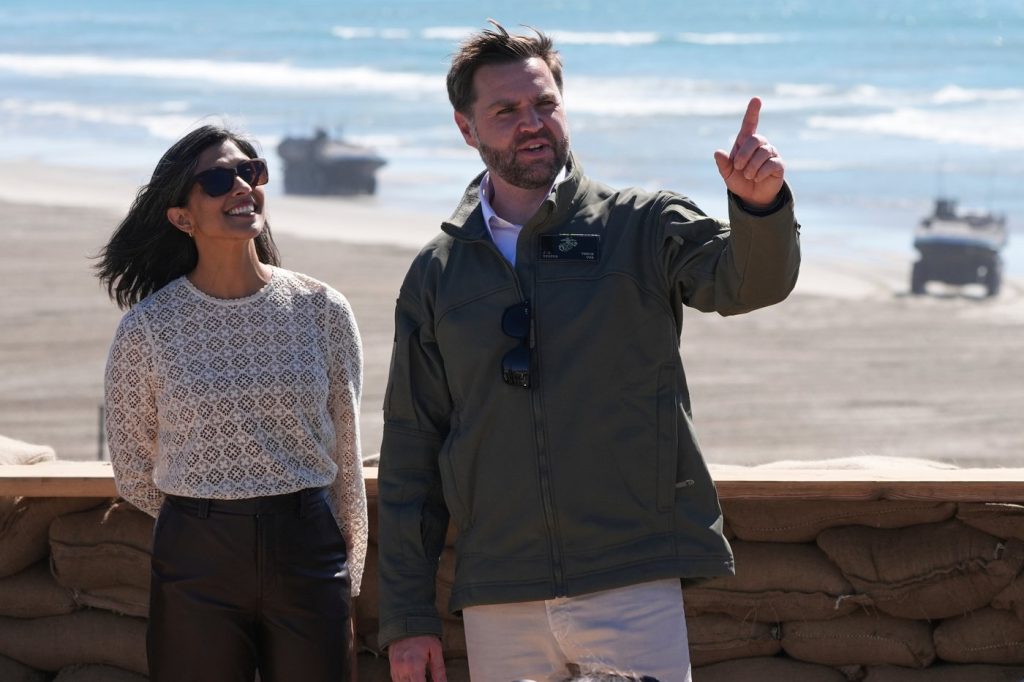Vice President JD Vance recently generated controversy during a Turning Point USA event at the University of Mississippi when he expressed his hopes that his Hindu wife, Usha Chilukuri Vance, might someday convert to Christianity. This statement highlighted the sensitive dynamics facing interfaith couples, particularly those in the public eye.
Experts emphasize the importance of mutual respect for each other's religious beliefs and open discussions regarding the upbringing of their children. Susan Katz Miller, author of “Being Both: Embracing Two Religions in One Interfaith Family,” noted that pressuring a partner to convert can be detrimental to the relationship. She stressed that respecting a partner's entire identity is crucial for a successful marriage.
At the event, Vance responded to a question about raising their children without prioritizing one religion over the other. He stated, “Do I hope that eventually she is somehow moved by what I was moved by in church? Yeah, honestly, I do wish that,” reflecting his strong Christian faith. However, he acknowledged that his wife has free will and may choose not to convert.
Following his remarks, Vance faced criticism from the Hindu American Foundation, which highlighted the problematic nature of his comments as indicative of a belief that only one path to salvation exists. The foundation pointed out the historical pressures faced by Hindus regarding conversion to Christianity and noted a concerning surge in anti-Hindu sentiments from some Christian groups.
In response to the backlash, Vance took to social media to clarify his affection for his wife, stating that she is “the most amazing blessing” in his life. He affirmed his support for her beliefs and reiterated that he hopes she might one day share his faith but will continue to love and support her regardless of her religious stance.
Interfaith marriages are increasingly common in the United States, with a 2015 Pew Research Center survey revealing that 39% of Americans who married since 2010 had a spouse from a different religious background, in contrast to only 19% before 1960. The growing number of interfaith couples indicates evolving societal norms around religion and marriage.
While Vance and his wife have opted to raise their children as Christians, including attending a Christian school and participating in Catholic sacraments, Miller argues that pressuring a spouse to convert is detrimental to a healthy partnership. Similarly, John Grabowski, a theology professor at The Catholic University of America, noted that the Catholic Church mandates interfaith couples to commit to raising their children in the Catholic faith without coercion.
Religious conversion within interfaith partnerships is also explored in cultural narratives, such as the Netflix show “Nobody Wants This,” which depicts a relationship between a Reform rabbi and an agnostic woman facing pressures around conversion. Grabowski commented on the significance of prominent figures like Vance discussing these intimate issues, highlighting the real-life complexities interfaith couples navigate.
In the forum of interfaith relationships, Dilip Amin, founder of InterfaithShaadi.org, cautioned against conversions driven by external pressures. He advised couples to prioritize their mutual understanding and communication. Additionally, Ani Zonneveld, president of Muslims for Progressive Values, discussed the strains that can arise when one partner's religious practices change post-marriage, emphasizing the need for fairness and honesty between spouses.
The insights shared by various experts underline the delicate balance required in interfaith marriages, where the goal should be mutual support and respect rather than conversion. Rev. J. Dana Trent, who has navigated an interfaith marriage, articulated that the objective is not to change one another but to deepen understanding and connection within their respective faith traditions.












